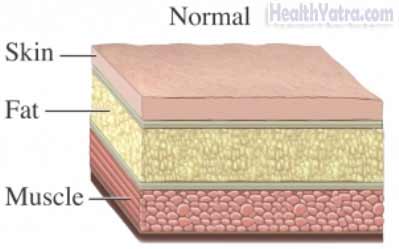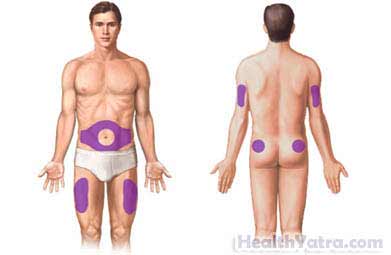Definition
A subcutaneous (sub-Q) injection is a shot that delivers medicine into the layer of fat between the skin and the muscle. This type of injection can be given by a healthcare professional, or a patient can self-inject.


Reasons for Procedure
Some medicines need to be injected because they are not effective if taken by mouth. Subcutaneous injections are an easy way to deliver this type of medicine. Examples of medicines given by sub-Q injection include:
- Insulin for people with diabetes
- Low molecular weight heparin (eg, enoxaparin ) to prevent blood clots
Possible Complications
Any break in the skin can increase the risk of infection. However, following the steps will help prevent infection.
What to Expect
Prior to Procedure
- Make sure you have all of the items you will need easily available: syringe, medicine, cleaning materials, etc.
- Wash hands with warm, soapy water. Dry with a clean towel.
- Select a site. Cleanse the area (about 2 inches) with a fresh alcohol wipe.
- Wait for the site to dry.
Giving the Subcutaneous Injection
- Remove the needle cap.
- Pinch a 2-inch fold of skin between your thumb and index finger.
- Hold the syringe the way you would a pencil or dart. Insert the needle at about a 45 degree angle to the pinched-up skin. (The needle should be completely covered by skin.).
- Slowly push the plunger all the way down to inject the medicine.
- Remove the needle from the skin.
- If there is bleeding at the site of injection, apply a bandage.
- Immediately put the syringe and needle into a container that is puncture-proof.
- Find out what services are available in your area for disposing of biological waste.
General Injection Tips
- Change your injection site in a regular pattern.
- Give new injections at least 1.5 inches away from the last injection site.
Will It Hurt?
The needles for sub-Q injection are very thin and short, so pain is usually minimal. You may have some soreness later.
Tips for Minimizing Injection Pain
- Inject medicine that is at room temperature.
- Remove all air bubbles from the syringe before injection.
- Break through the skin quickly.
- Do not change the direction of the needle as it goes in or comes out.
- Do not reuse disposable needles.
Call Your Doctor
Contact your doctor if any of the following occurs:
- You are unable to give yourself the injection
- The injection site continues to bleed
- There is a lot of pain
- You inject the medicine into the wrong area
- You get a rash around the injection site
- You develop a fever or experience signs of allergic reaction
In case of an emergency, call for medical help right away.
